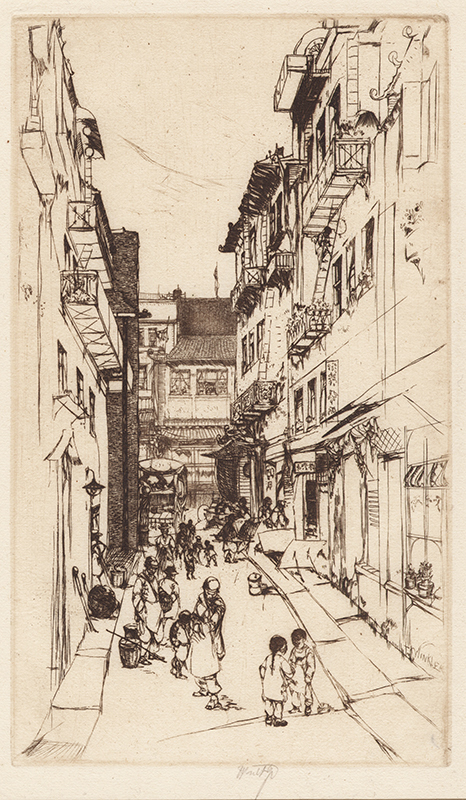
19th, 20th & 21st Century Fine Prints
707-546-7352 · fax 707-546-7924 · web: www.annexgalleries.com · email: artannex@aol.com
Ross Alley (aka: Large Ross Alley) by John William Winkler

Ross Alley (aka: Large Ross Alley)
John William Winkler
Ross Alley (aka: Large Ross Alley)
John William Winkler
1894 - 1979 (biography)John Winkler etched this view of Ross Alley in 1921 and it is considered part of his "Chinatown" series from the early 20th century. It is located in San Francisco between Jackson and Washington and is parallel to Stockton and Grant in the heart of Chinatown.
Ross Alley is the oldest alley in San Francisco, built in 1849, next to the house of pioneer merchant Charles L. Ross. The alley became famous for its brothels and gambling establishments during the days of the Barbary Coast. According to a 1901 article, "Ross [A]lley is thought to be the spot in San Francisco where the souls of the dead can most easily come and where the evil spirits are forbidden to exercise their powers".
The alley is the main entrance to the current Golden Gate Fortune Cookie Company. Ross Alley was filmed in Indiana Jones and the Temple of Doom, Big Trouble in Little China, and The Karate Kid Part II.
Like his hero James Whistler, John Winkler scoured sources for antique paper to print his work on, often using end papers from books, old ledgers, Asian papers, etc. The variety of papers often changed the image in the overall "color" and the quality of the inking.
